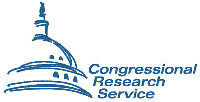Congress of the United States
Date of this Version
2006
Abstract
Congress enacted the last major amendments to the Clean Water Act in 1987 (P.L. 100-4). Since then, the Environmental Protection Agency (EPA), states, and others have been working to implement the many program changes and additions mandated in the law. At issue today — more than 30 years after enactment of the core law — is what progress is being made to achieve its goals. In general, states and environmental groups fault EPA for delays in issuing guidance and providing assistance to carry out the law. EPA and others are critical of states, in turn, for not reaching beyond conventional knowledge and approaches to address their water quality problems. Environmental advocates have been criticized for insufficient recognition of EPA’s and states’ need for flexibility to implement the act. Finally, Congress has been criticized for not providing adequate resources to meet EPA and state needs. Appropriations for clean water programs, especially water infrastructure, are a continuing issue.
Three issues have predominated recently in connection with implementation of the law. The first involves funding to construct municipal wastewater treatment plants under the state revolving fund (SRF) provisions of the 1987 amendments. Budgetary constraints on federal aid for wastewater treatment and large remaining funding needs are long-standing concerns. The President’s FY2007 budget requested $688 million for these SRF grants, 22% less than FY2006 funding, and in May 2006 the House passed legislation providing the level requested by the President (H.R. 5386). The Senate Appropriations Committee approved the same level in June. Final action did not occur before the 109th Congress adjourned in December, thus carrying over this legislative activity to the beginning of the 110th Congress.
The second issue involves progress in implementing the nonpoint pollution management provisions added in 1987. States have developed management programs describing methods that will be used to reduce nonpoint pollution, which may be responsible for as much as 50% of the nation’s remaining water quality problems. Most observers agree that implementation of nonpoint source control measures is significantly hindered by limited resources. EPA has adopted program guidance intended to give states more flexibility and to speed up progress in nonpoint source control. The third issue is impacts of requirements under current law for states to develop total maximum daily loads (TMDLs) in order to address uncontrolled sources of impairment in waters that have not yet achieved water quality standards. In addition, other issues exist that are important to implementation and attaining the goals and objectives of the act. They include efforts to manage overflows of untreated wastewater from municipal sewer systems, and questions about the effectiveness and costs of the nation’s wetlands protection efforts, particularly in relation to the wetlands permit program in Section 404 of the act. Congressional oversight of these issues in the 110th Congress is anticipated.


Comments
Published by Congressional Research Service, www.crs.gov, RL33466